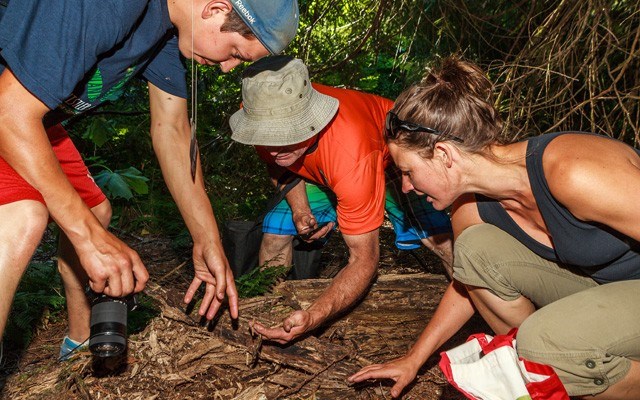Wildlife biologist Brent Matsuda rarely misses a Whistler BioBlitz, the annual race against the clock to catalogue as many species as possible.
In fact, in the event's nine-year history, Matsuda's only missed one.
But he had a pretty good excuse.
"The only one I missed was last year because I was getting married overseas," he laughed.
BioBlitz returned to the corridor this weekend, and was expanded to include Squamish for the first time.
In all, an estimated 70 scientists counted over 500 species over three days across Whistler, Pemberton and Squamish.
It was a particularly fruitful event for the entomologists who took part, with Saturday's record-breaking temperatures drawing out a flurry of creepy crawlers and buzzing bugs in Whistler.
"The comment (from scientists) was that it was like a tropical night because it was really warm and there were just so many insects flying around," said Bob Brett, one of the event's organizers.
One of the notable finds by a volunteer was the rubber boa snake.
"Until about 10 years ago, they weren't even known to occur in the area here," Matsuda noted.
Taking to the Squamish Estuary for the first time, researchers were delighted to encounter the rare checker mallow plant, a first for many of the participants.
"(It's been) documented before, but it was my first time seeing it and for a lot of people it was the first time seeing a bunch of the species that grow in those estuaries," Brett said. "I saw probably 10 plants I've never seen before, that was pretty exciting for me."
Bone-dry conditions in the Spud Valley hampered some of the efforts, although Brett was still excited to observe several different species of butterfly.
Spreading the blitz out to Squamish and Pemberton has been a boon for the scientific records of the areas, but also serves another purpose.
"Both (communities) have newly designated conservation areas over the past few years, and so there's a really obvious application for that information because the more you know about an area the easier it is to put together a management plan," said Brett.
But of course the BioBlitz isn't just for the eggheads — around 200 members of the public also took part.
Matsuda, who led a session on owls, explained how valuable events like BioBlitz are in connecting people with their natural surroundings — especially the younger generation.
"It makes people realize how valuable the environment is and what's out there," he said. "The kids are the next generation that will be the guardians of our environment... so I think it's good that they realize there's a whole world out there apart from the digital electronic world."
Believed to be the longest-running BioBlitz in Canada, Brett said he regularly fields calls from other organizers asking him what his secret is.
"If the scientists are having fun, then the public also has fun and they're going to come back," Brett said.
"It's just a way for people to work outside of their silos and revert back to being a little kid because they're having a lot of fun and playing around in the dirt."
Brett has big plans to mark the 10th anniversary of BioBlitz next year, saying he'd like to make it "a greatest hits" of sorts, hoping to bring back many of the scientists who've participated over the years. He also plans to keep the same three-community format, and said he hopes to extend the event beyond three days.




